Over this week, we will migrate all our publishing to our new website. Please make sure to subscribe below here if you haven’t already, as we will be transferring all our mailing lists to the new website. You can check it out here.
Welcome to The Observatory. The Observatory is how we at Prometheus monitor the evolution of the economy and financial markets in real time. The insights provided here are slivers of our research process that are integrated algorithmically into our systems to create rules-based portfolios. We also just released our latest Month In Macro note, which over 45 pages, explains our current assessment of economic and market conditions. You can read it here:
CPI data today came out largely in line with our expectations. Our expectations were for a print of 0.17%, while the print came in at 0.10%. Below, we show the composition of our estimates relative to the realized print:

In our note, prior to the print, we said:
We think print is one for careful assessment. Particularly, we will be looking two examine two factors. First, we will looking to see whether motor vehicle inflation remains persistent. Given the industry dynamics we monitor, there is potential for new cars to see deflation as manufacturing productions alleviate some degree of supply shortages. Nonetheless, used car inflation likely shows significant potential to re-accelerate this month. Second, we will be looking to see if housing inflation can continue the deceleration we have seen in the last few prints. This would confirm that our expectations of disinflation in housing are taking hold. In summary, the print will likely look weak due to commodity factors. Still, it is imperative to note that excluding all other items, CPI inflation will remain above 2% just through the housing component. We remain far from the Fed’s objectives.”
The latest print confirmed our expectations on both fronts: used car inflation came in strong, while shelter inflation continued its descent. We zoom into the transportation sector inflation:
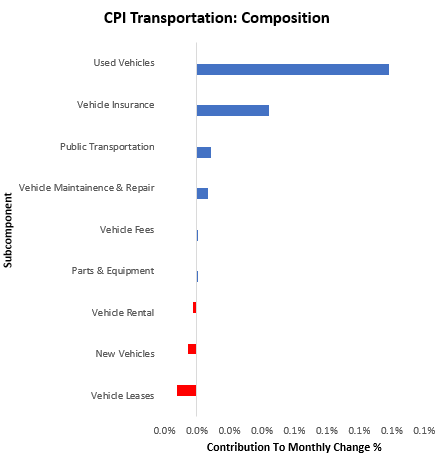
As we can see above, used vehicle prices were the primary driver of transportation inflation, as expected. This dynamic is likely to be an ongoing support to inflationary pressures. We dig a little deeper into the print.
CPI Inflation increased by 0.12% in May, surprising consensus expectations of 0.1%. This print contributed to a sequential deceleration in the quarterly trend relative to the yearly trend. Below, we show the monthly evolution of the data relative to its 12-monthly trend and consensus expectations.
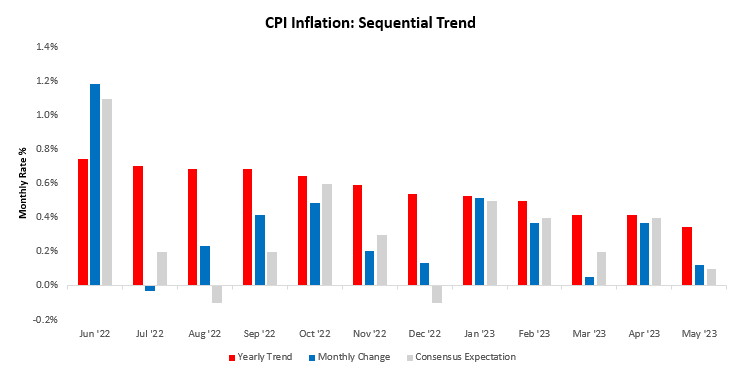
At the subcomponent level, the primary drivers of this print were Motor fuel (-0.2%), Energy Services (-0.05%), Transportation Commodities Less Motor Fuel (0.11%), Shelter (0.19%), & Transportation Services (0.05%). Below, we show the top 10 drivers of the monthly change:
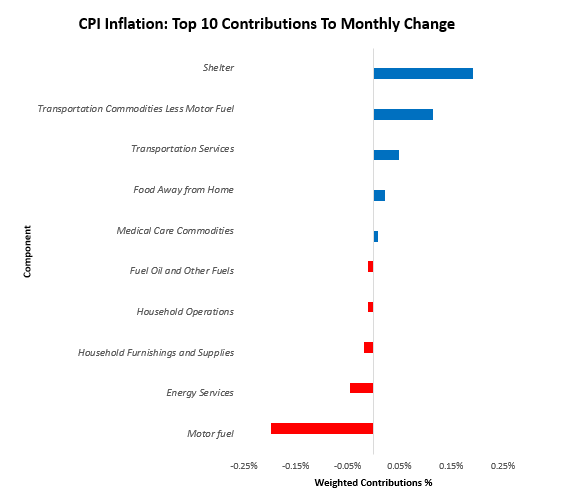
Over the last year, Food at Home (0.5%), Food Away from Home (0.4%), Motor fuel (-0.71%), Shelter (2.77%), & Transportation Services (0.61%). have been the primary drivers of the 4.13% CPI inflation. We show the contributions of these items to yearly changes in total spending below.
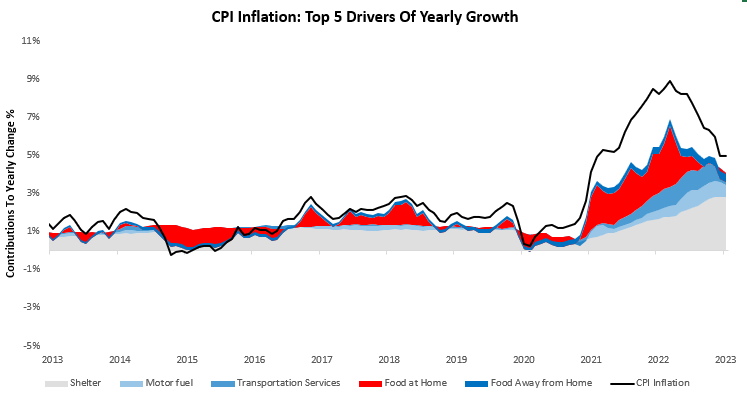
Alongside these big-picture drivers, we think it is important to note that we are seeing deflation in a few areas of the economy now:
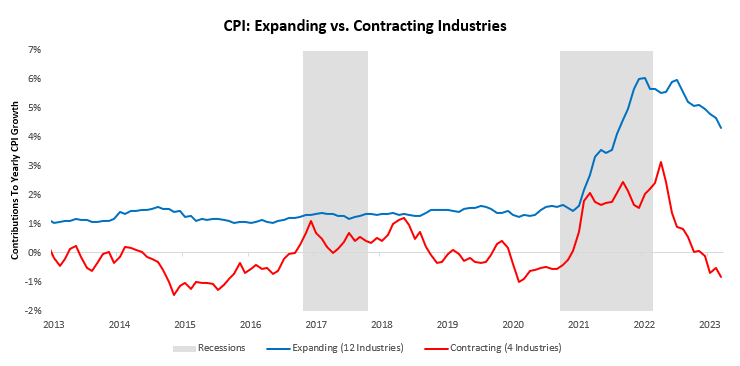
The industries currently seeing deflation are Fuel Oil, Motor fuel, Education & Communication Commodities, and Alcoholic Beverages.
We think it is important to note that excluding food and energy, i.e., core CPI, was up 0.40% this month— implying a 4.9% annualized rate for core inflation. This data is far removed from the Fed’s objective. As such, bond markets have moved to re-discount expectations, moving away from aggressive expectations of easing, consistent with our views outlined in our Month In Macro note. We show this below:
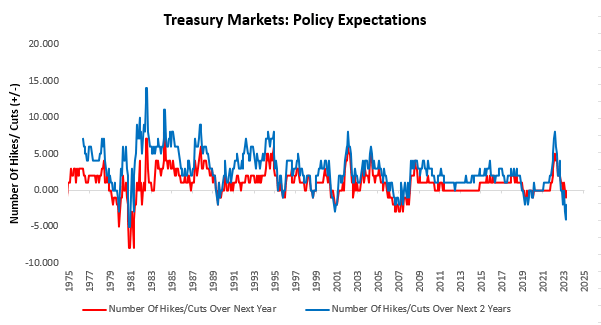
Markets have moved from pricing one interest rate cut over the next year and four over the next two to now pricing zero cuts in the next year and two cuts over the next two. Ahead of this repricing, our trend signals on 10- Year Treasuries had already turned negative and remains there:
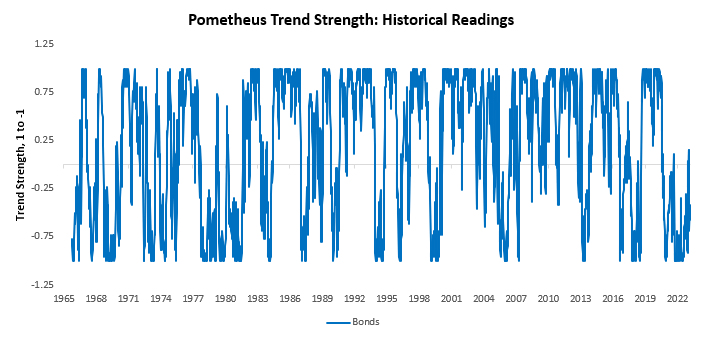
Additionally, we show daily trend signals for the Treasury ETFs our systems track. As we can see, they all show short signals across the curve:
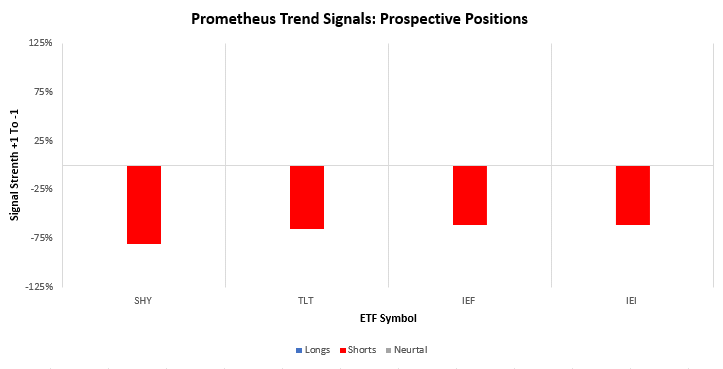
Inflationary dynamics continue to create a challenging dynamic for Treasuries, and the disinflationary pricing we expected to support a 60/40 portfolio in H1 of 2023 is likely to dissipate in H2 of 2023 as markets come to terms with potential inflation entrenchment:
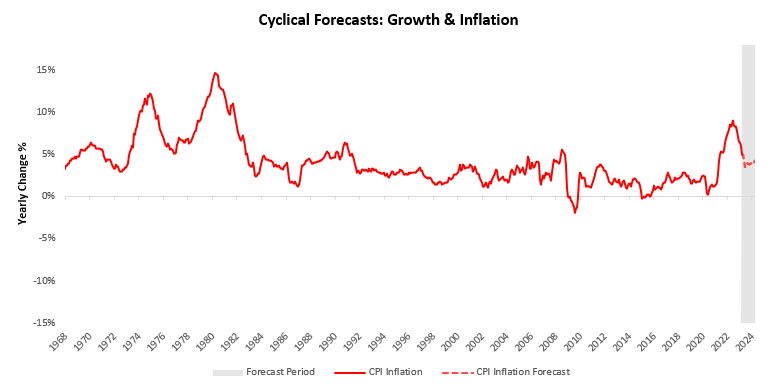
Until next time.
